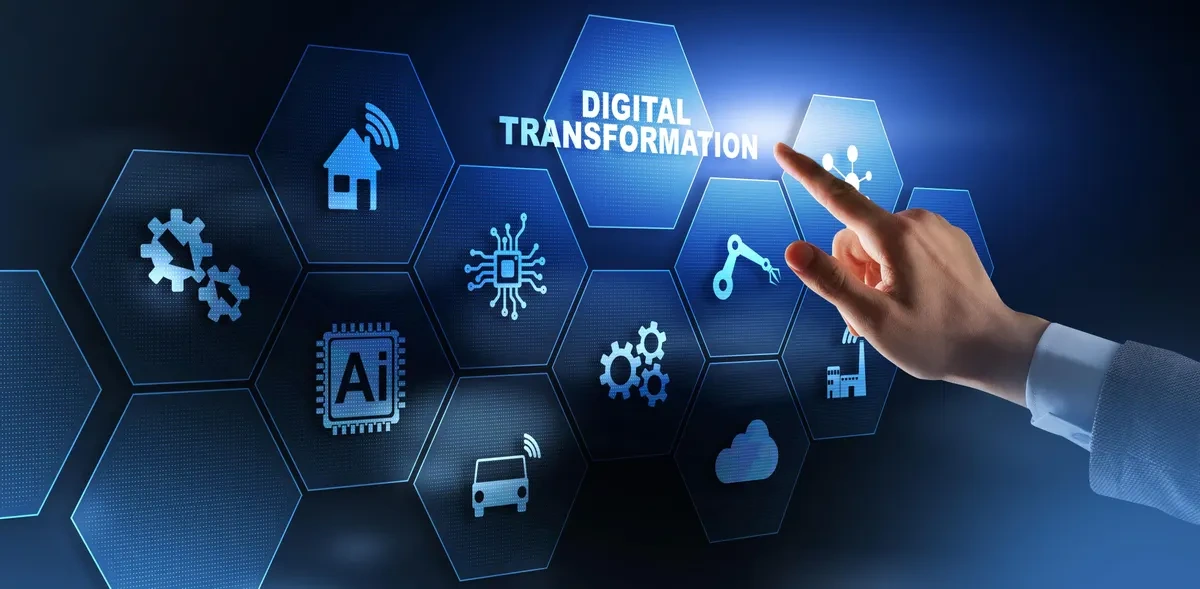Logistics faces persistent challenges that hinder efficiency and growth. Digital transformation emerges as a strategic solution, leveraging technologies to streamline operations and enhance decision-making. By adopting innovations like IoT and AI, organizations can improve visibility across supply chains. This transformation not only addresses operational bottlenecks but also fosters collaboration among partners. However, the path to successful implementation requires careful planning and execution. What specific strategies can organizations employ to navigate this complex landscape?
Key Takeaways
- Digital transformation streamlines logistics processes, reducing operational bottlenecks and increasing overall efficiency.
- Enhanced visibility through real-time data allows for swift decision-making, minimizing delays and improving customer satisfaction.
- Advanced technologies like AI and analytics optimize resource allocation, lowering costs and boosting profit margins.
- Collaboration among partners is facilitated, creating a cohesive network that enhances responsiveness and adaptability to market changes.
- Embracing digital solutions fosters a culture of innovation, positioning organizations for sustainable growth in a competitive landscape.
The Current Challenges in Logistics Management
As the logistics industry grapples with increasing demand and complexity, it faces several significant challenges that hinder operational efficiency. Traditional processes, often reliant on outdated technologies, struggle to keep pace with evolving customer expectations. Supply chain disruptions, driven by global events, further complicate logistics management, leading to delays and escalated costs. Furthermore, the integration of diverse systems remains a barrier, preventing seamless data flow and real-time decision-making. The industry’s workforce also faces skill gaps, which can impede the adoption of innovative solutions. To address these issues, logistics digital transformation emerges as an essential strategy, enabling companies to leverage advanced technologies and analytics. By embracing this transformation, organizations can enhance operational agility, improve service levels, and ultimately foster sustainable growth in a competitive landscape.
Understanding Logistics Digital Transformation
Logistics digital transformation represents a strategic shift in how companies approach their operations amidst ongoing challenges in the logistics sector. This transformation involves the integration of digital technologies into every aspect of logistics management, enhancing visibility, efficiency, and responsiveness. By leveraging data analytics, automation, and cloud computing, organizations can streamline processes, reduce operational costs, and improve customer satisfaction. The focus is on creating a connected ecosystem where information flows seamlessly, allowing for informed decision-making and quicker response times. Additionally, embracing logistics modern transformation fosters a culture of innovation, enabling teams to adapt to market changes and customer demands effectively. Ultimately, this strategic shift not only addresses current challenges but also positions businesses for sustainable growth in an increasingly competitive landscape.

Key Technologies Driving Digital Transformation in Logistics
While the logistics industry faces increasing pressures to optimize operations, several key technologies are emerging as catalysts for digital transformation. These innovations not only streamline processes but also enhance connectivity and data utilization across the supply chain.
- Internet of Things (IoT): IoT devices provide real-time tracking and monitoring, enabling proactive decision-making and improved asset management.
- Artificial Intelligence (AI): AI algorithms analyze vast datasets to forecast demand, optimize routes, and automate tasks, driving efficiency.
- Blockchain: This technology guarantees transparency and security in transactions, fostering trust among stakeholders and reducing fraud.
Together, these technologies greatly contribute to logistics modern transformation, empowering businesses to thrive in a competitive landscape.
The Impact of Logistics Digital Transformation on Efficiency
Transforming operational frameworks through logistics digital transformation greatly enhances efficiency within supply chains. By leveraging data analytics, real-time tracking, and automation, organizations streamline processes and reduce operational bottlenecks. Enhanced visibility allows stakeholders to make informed decisions swiftly, minimizing delays and optimizing resource allocation. Consequently, logistics modern transformation decreases costs and improves response times, fostering a more agile supply chain environment. Additionally, this shift encourages collaboration among partners, creating a cohesive network that operates seamlessly. As organizations adopt these innovative solutions, they not only improve their efficiency but also position themselves competitively in the market. Ultimately, embracing logistics modern transformation is vital for businesses aiming to thrive in an increasingly interconnected and dynamic landscape.
Strategies for Implementing Digital Transformation in Logistics
Implementing digital transformation in logistics requires a strategic approach that aligns technology with business objectives. Organizations must adopt tailored strategies to guarantee successful integration and maximize the benefits of logistics modern transformation. Key strategies include:
- Assess Current Capabilities: Evaluate existing systems and processes to identify gaps and opportunities for improvement.
- Invest in Training and Development: Equip employees with the necessary skills to adapt to new technologies, fostering a culture of innovation.
- Collaborate with Technology Partners: Engage with specialized vendors to access cutting-edge solutions that enhance operational efficiency.
Frequently Asked Questions
What Are the Costs Associated With Logistics Digital Transformation?
The costs associated with logistics digital transformation include technology investment, training expenses, system integration, ongoing maintenance, and potential disruptions during implementation. Companies must strategically assess these factors to guarantee sustainable growth and efficiency improvements.
How Long Does the Digital Transformation Process Typically Take?
The digital transformation process typically takes between six months to two years, depending on the organization’s size, complexity, and readiness. Strategic planning and commitment are essential for a successful and timely shift in logistics modern transformation.
What Skills Are Needed for Successful Implementation?
Successful implementation requires skills in data analysis, project management, change management, technology integration, and effective communication. These competencies foster collaboration and adaptability, essential for maneuvering the complexities of logistics modern transformation within organizations.
Can Small Businesses Benefit From Logistics Digital Transformation?
Small businesses can greatly benefit from logistics digital transformation, enhancing operational efficiency, reducing costs, and improving customer satisfaction. By leveraging technology, they can compete more effectively in the marketplace, fostering growth and sustainability.
How Do You Measure Success in Digital Transformation Initiatives?
Success in digital transformation initiatives is measured through key performance indicators such as increased efficiency, reduced costs, enhanced customer satisfaction, and improved data accuracy, reflecting strategic alignment with organizational goals and overall business growth potential.
Conclusion
To sum up, logistics digital transformation is pivotal for enhancing business efficiency and growth in a competitive landscape. By leveraging advanced technologies such as IoT, AI, and data analytics, organizations can optimize operations, improve decision-making, and foster collaboration across supply chains. The strategic implementation of these innovations not only addresses current logistical challenges but also positions businesses for sustainable success, enabling them to adapt swiftly to market demands and drive continuous improvement in service delivery and cost management.
You May Also Like to Read:






